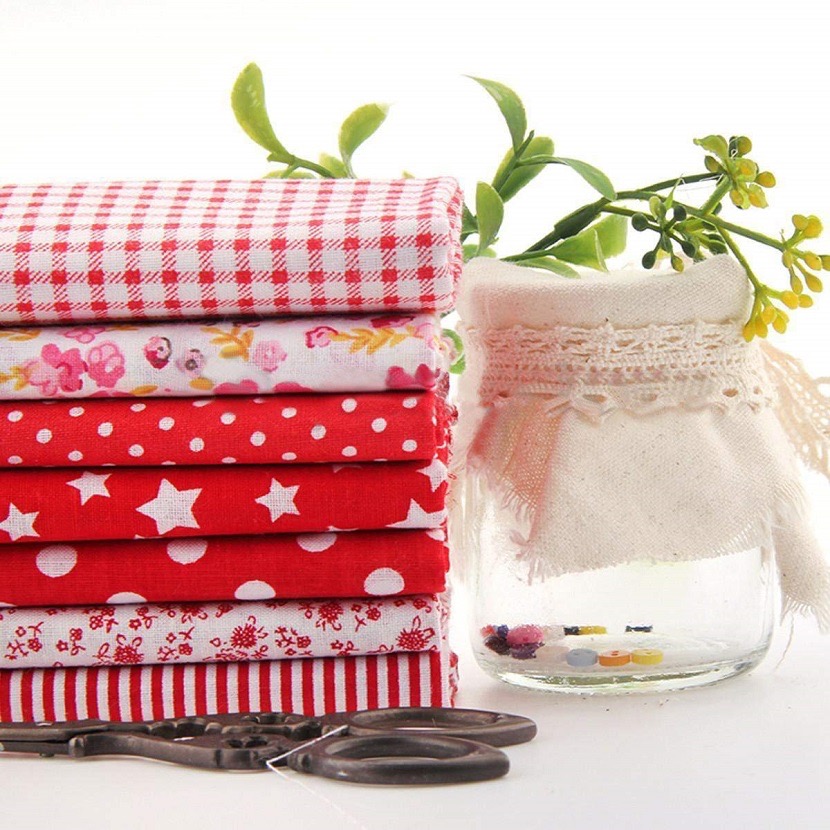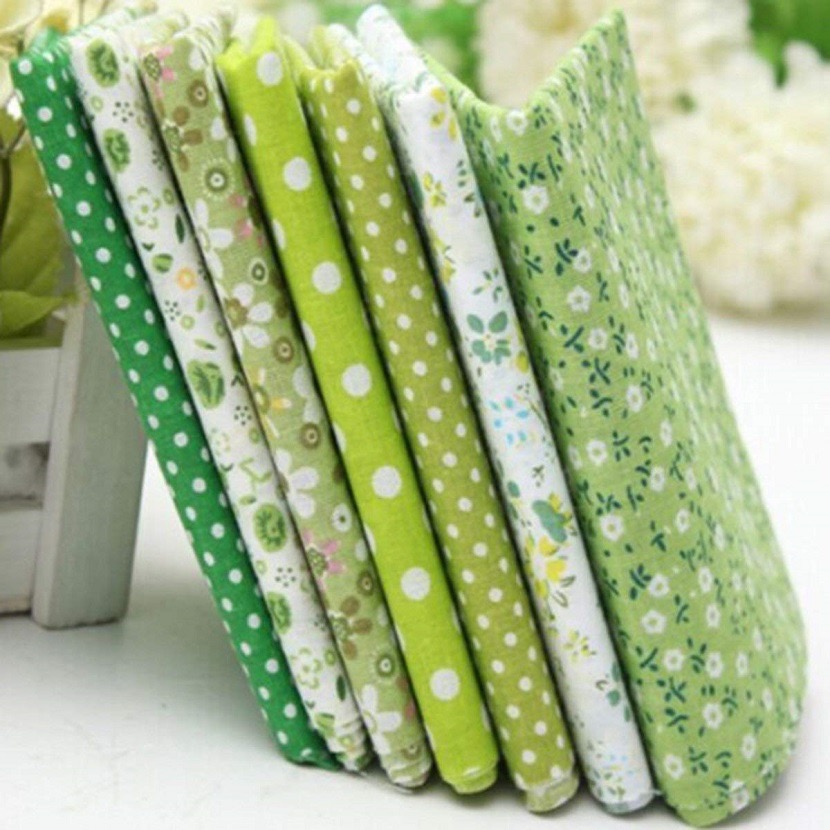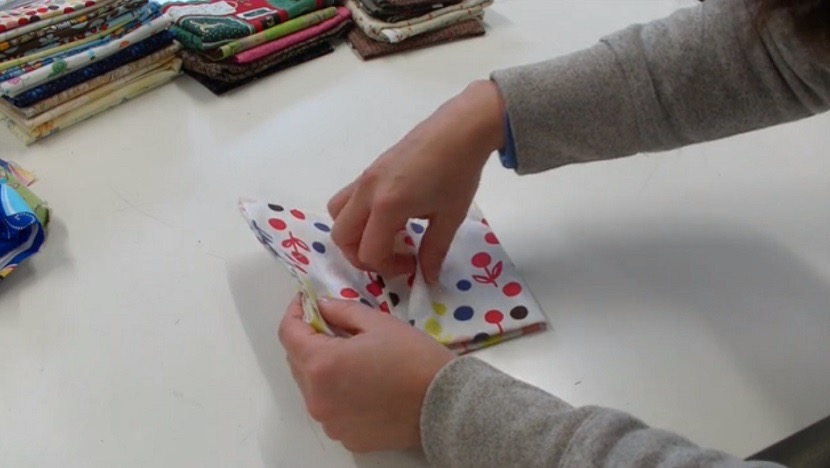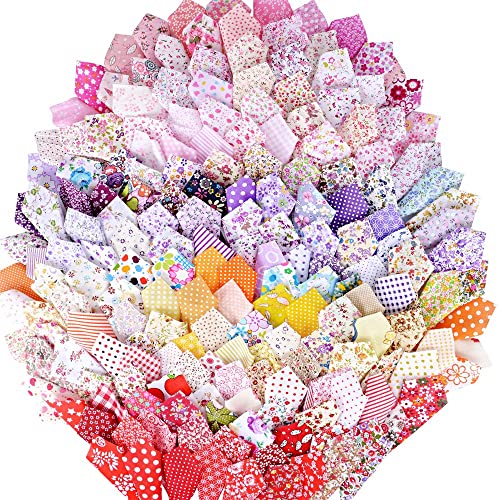If you are entering the world of patchwork You should know that the choice of fabrics is the most important thing so that the work has the result we are looking for. Therefore, below we leave you with all the advice and guidelines to keep in mind when choosing and working with Patchwork fabrics.
How to choose fabrics for Patchwork

Choosing fabrics for Patchwork It is one of the fundamental steps. Because a good choice of them will leave us with an optimal result in the work that we are going to elaborate. The truth is that it is not always an easy step to take. Even for those who have been applying this technique for a long time, they do not always want to get out of the usual. Because perhaps that implies 'taking a false step'.
Type of fabrics for Patchwork
We have a wide variety of fabrics to be chosen. One of the most common is 100% cotton. Why? Because it is perfect for this job thanks to its density. This type of cotton fabrics have a higher density than the common ones, as well as a slightly higher weight. So its quality is also better.
It must be recognized that they are somewhat expensive, so you have the option of combining both cotton and polyester, although they are risky options. More than anything in terms of finish. So, since cotton is the main type of fabric to choose, you have other varieties.
- Silk: Without a doubt, it is a fabric that will not leave an amazing result. Everyone will like the finish and they will want to copy your design. The truth is that it also has its negative side. It is an expensive fabric and it is difficult to work with because it slips and is quite thin.
- The cotton flannel: Here we have the best option when we think about making winter quilts as well as quilts for double beds or children.
- Wool: A few years ago she was one of the great queens of fabrics. But today she is no longer used as much as in the past. In addition to this, it has a high price, so it is not very advisable.
- Linen: It is a little thicker than cotton. It usually looks great for both more modern ideas and some vintage style ones.
The truth is that after discovering the types of fabrics, it must be said that for quilts as well as other projects, 100% organic cotton will be the best choice. As a second option, we are left with linen.
Choose the colors of the fabrics

It is true that we cannot establish a single rule. Because everyone has their own taste, both in terms of fabrics and colours. But it is true that sometimes doubts do not come to us because of the fabrics themselves, but also because of the colors. Patchwork is not boring at all in this sense, but we should try colors and shades with which our heads do not hurt when we have to stare at them.
Hence we must highlight the primary colors such as red, yellow and blue. Starting from them and their mixtures, we will get mauve, green and orange. From the latter we can also refer to new shades, within the same color. It does not hurt that we go making a choice of the ones you prefer, but without it being too showy.
This thinking about primary and secondary colors It leaves us the idea of which ones we can also mix in the Patchwork so that we have a good result.
Where to buy Patchwork fabrics

Finding the fabrics to start doing Patchwork is very simple. More than anything because we have two different paths to take.
- On the one hand, craft stores as well as haberdashery of a lifetime, they always have the aforementioned fabrics. You just have to look for those that are close to your place of residence and you will see how you have everything you need there. You can buy them by the meter and ask all those that have some discounts. Especially in which there is little quantity left, surely we can find great offers.
- Of course, on the other hand, you can also buy the fabrics for Patchwork online. There are numerous pages to which you have access. In them, you will be able to discover all kinds of fabrics, viewing the virtual catalogue. Also access various offers, colors and pre-cut fabrics. Pages like Amazon always have that perfect variety at an unbeatable price. So it is one of the options to consider.
FAQs
How to join fabrics
First we must gather all the pieces of fabric that we have cut. So that they are totally the same, it is worth ironing them before putting them together. To get an idea, we will place the pieces of fabric next to each other in rows. So, we will start sewing from the first row horizontally.
Once we have a whole row, then we will go to the bottom one and we will also sew all the scraps of this new row.
Finally, we will join those of the upper row as those of the lower one. This is roughly how to sew, but to join the fabrics we must take the first piece and put it face to face with the second. We join them with pins, just in the area where they are going to be sewn. Then, we will sew them by machine and remove said pins. Now we will have pieces of two scraps and no longer just one.
We will have to sew the rest so that we obtain a single final piece of fabric. If you want to see it and take good note of the explanations, then don't miss the following video, which is perfect for beginners.
how fabrics are cut
The vast majority of Patchwork fabrics must be cut to the thread. That is, make a cut in the fabric parallel to its edge. For this we will need:
Once we have all the material, we will follow these steps.
First, we will iron the fabric to avoid finding any kind of fold. We place the fabric on an iron or cutting base, so that it is completely aligned with the marks that said iron usually has. You can make a first cut to be able to match the fabric.
Then, we will cut the length parallel to the edge or edge. Use a ruler to know how much fabric you are cutting, depending on what you need. Remember to leave a margin for the seam. You can leave 0,7 centimeters. Try to make a clean cut in the fabric, because otherwise, it will be badly cut and with some irregular pieces. The width is cut in the same way, thus obtaining equal pieces. If you want to cut fabric in a circle, then you will need a compass-style circular cutter.
how they fold
There are several ways we have to fold fabrics or store them. One of the simplest is indicated for 'fat quarter'. They are those larger pieces of fabric cut in a rectangular way. We fold this fabric in half. Now, in that smaller piece that results, we will have to divide it in two, that is, make two marks on it horizontally and fold it twice. So, finally, we will have a much smaller rectangle of fabric, since we will still have to fold it again.

Again, we draw an imaginary line through the center of it. We fold one end to that center and then the other. To 'close' the fabric and prevent it from opening or undoing, you will place one of the resulting ends inside another. Another of the ways to fold and have the fabrics collected, is helping us with some templates, where we will wrap the fabrics so that all of them can be seen. This is perfect for those little bits, scraps, that are different colors or patterns. Thus, we will have them well organized and in their place.
How should patchwork fabrics be washed?
This question is somewhat complicated to answer. Because to begin with, that of washing or not washing patchwork fabrics always generates quite a bit of controversy. More than anything because there are many people who choose not to wash them, while others are delighted to do so.
We have to start by saying that the 100% cotton fabrics that are used, shrink in their first wash. Hence, many people do want to wash them before and not, when the work is finished, because it can get damaged. Also, on the other hand, if you work with dark fabrics they can fade. Bearing all this in mind, let's see how Patchwork fabrics are washed.
It is best to wash them by hand. Because we will be protecting the garment more, although if you have a special mesh bag for the washing machine, you can always put it with the rest of the laundry.
If you do not want the fabrics to continue to fade, then, place a large container and pour warm water on it. On it a couple of drops of vinegar, no more. That makes the colors stay and you don't have to worry about fading anymore.
You soak the fabrics a little and then change the water, add a little soap and rinse them in cold water. Let the fabrics air dry. and ready. Of course, if you want to save all these steps, you can also clean them with wipes that absorb dyes. You will find them in any supermarket along with washing and cleaning products.






